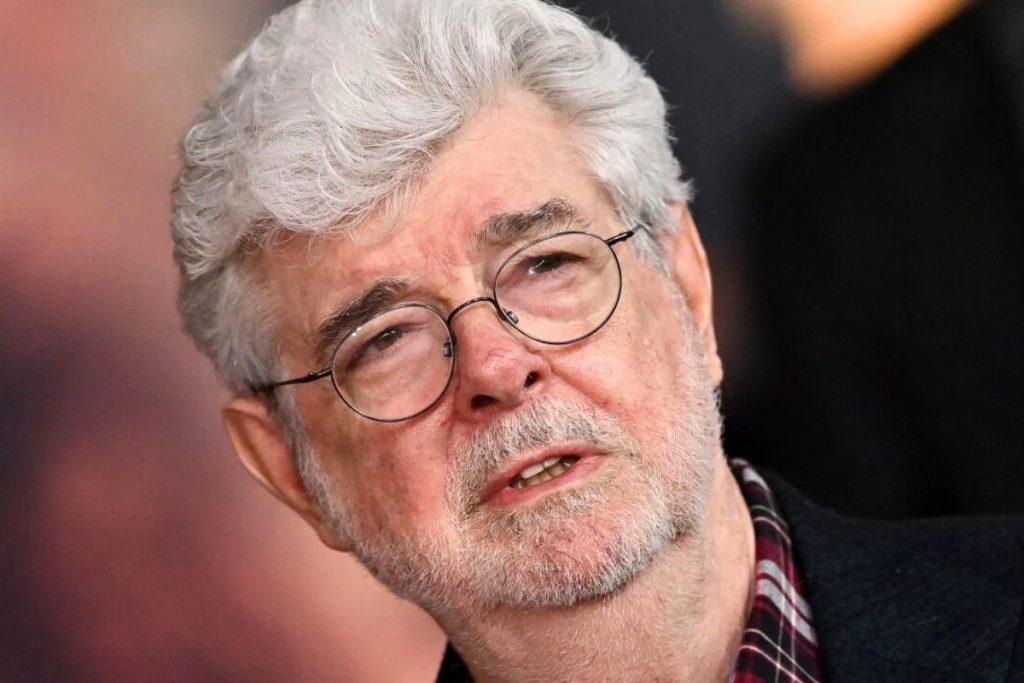Nearly twenty years after bringing Revenge of the Sith to cinemas, George Lucas has returned to the limelight with something entirely new. The man who gave the world Jedi knights, Sith lords and a galaxy far, far away is now building a real-world haven for storytelling — a museum dedicated to the art of narrative itself. And in classic Lucas style, it’s going to be epic.
George Lucas steps into the spotlight at Comic Con
It’s almost hard to believe, but until this summer George Lucas had never set foot on the stage at San Diego Comic Con. For a man often dubbed the pope of pop culture, the absence was curious. That changed on 27 July, when over 6,500 cheering fans welcomed the creator of Star Wars with the kind of reception usually reserved for rock stars. But Lucas wasn’t there for nostalgia — he had something very current, and very personal, to share.
He was unveiling his long-anticipated Lucas Museum of Narrative Art, a monumental project co-founded with Mellody Hobson. Set to open in Los Angeles in 2026, this “temple to popular art” will stretch over an impressive 28,000 square metres. Inside, visitors can expect vast galleries, two state-of-the-art theatres, more than 150,000 pieces from its collection, and more than a few surprises.
The San Diego Comic-Con attendees are chanting LUCAS for George Lucas' first ever #SDCC appearance. pic.twitter.com/V3at1nTKI5
— Screen Rant (@screenrant) July 27, 2025
A treasure trove for sci-fi and comic lovers
To whet appetites, Lucas brought along some choice artefacts from both the Star Wars and Marvel universes. On display were Luke Skywalker’s Landspeeder X-34 from A New Hope, General Grievous’s sleek TSMEU-6 bike, Anakin’s N-1 Starfighter from The Phantom Menace, and the iconic Speeder Bikes from Return of the Jedi. Concept art never before shown to the public will also take pride of place in the museum.
Marvel fans won’t be left wanting either. The original 1968 cover art for Iron Man will sit alongside Black Panther illustrations from the same year. And then there’s Lucas’s own half-century of personal art collecting, which includes works by Norman Rockwell, Frida Kahlo, Jessie Willcox Smith and other greats.
Joining Lucas on stage were filmmaker Guillermo del Toro and production designer Doug Chiang, both key creative forces in the world of fantasy and sci-fi. Actor Queen Latifah kept the conversation lively.
George Lucas gets a huge applause at his first-ever appearance at #SDCC pic.twitter.com/3n8JBYqDdy
— DiscussingFilm (@DiscussingFilm) July 27, 2025
George Lucas on what art really means
When talk turned philosophical, Lucas offered his own definition of art. “It’s about your connection to the work,” he said. “Not its price, not the fame of its creator. It’s something personal.” For him, emotional connection is the deciding factor — if something moves you, it qualifies as art, no matter what critics or curators might say.
He also spoke warmly about the unsung heroes of the creative process. “I’ve worked with hundreds of illustrators in my life. They’re all brilliant, yet they rarely get recognition. This museum is for them.”
Lucas reminded the audience of the enduring cultural power of science fiction, describing it as a kind of modern myth. “Through books and art, sci-fi gets people imagining the impossible — like going to the Moon — and once you imagine it, you start believing you can do it.”
George Lucas talks about what he thinks art means:
— DiscussingFilm (@DiscussingFilm) July 27, 2025
“I think it’s more about a connection with the work, not how much it costs or what celebrity did it, it’s more a personal thing… if you have an emotional connection to something, that’s art”#SDCC pic.twitter.com/72vrMLG55T
Guillermo del Toro’s blunt take on AI and creativity
Never one to mince words, del Toro weighed in on the rise of artificial intelligence in art. “People say you can make art with an app. Sorry — you can’t. Art needs personality and emotion. An app can’t give you that.” He likened AI-generated work to “eye candy without the protein” — pleasant enough to look at, but lacking substance.
Del Toro also reminded the crowd that comic books have historically been a bold cultural force, unafraid to “punch Nazis” and to address social issues long before other media dared.
Two decades on from Revenge of the Sith, Lucas’s latest venture is less about revisiting the past and more about curating a legacy — not just his own, but that of the illustrators, filmmakers and storytellers who’ve built worlds from scratch. And judging by the roar of approval in San Diego, the galaxy is more than ready.



